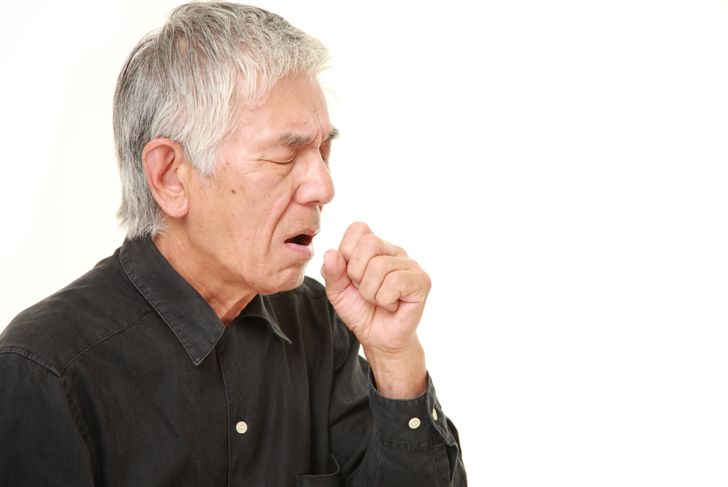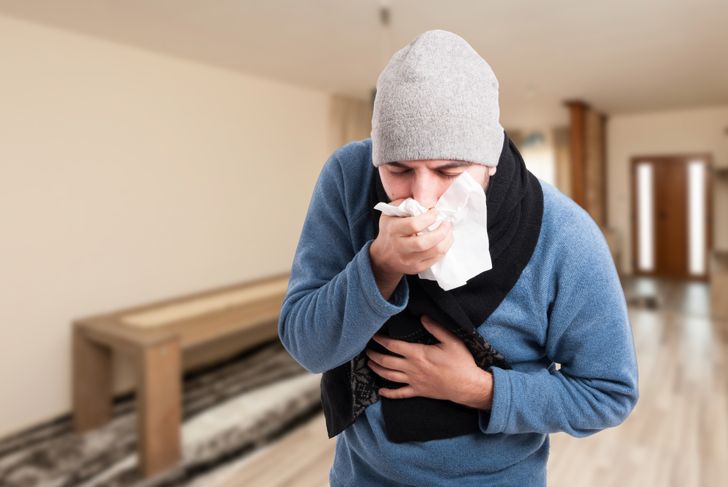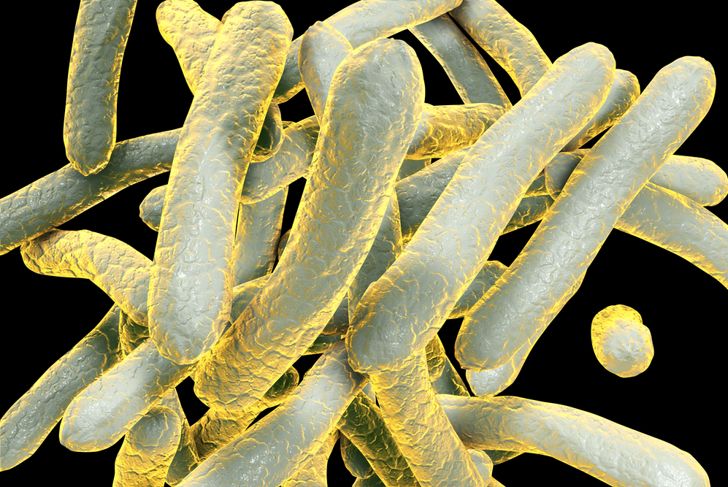Tuberculosis (TB) primarily affects the lungs. The bacterial infection is transmitted by Mycobacterium tuberculosis and can be spread through the air. TB was once a predominant cause of death around the world. During the 20th century, developments in medications and the quarantine of TB patients helped virtually eradicate the illness from the Western world. Cases continue to decrease each year; in 2017, about 9,000 people were diagnosed with the condition. Today, generally only those with compromised immune systems contract tuberculosis. People who work or live in long-term care centers, prisons, or healthcare facilities are at increased risk. Individuals who inject illegal drugs, and those who migrated from countries where the disease is prevalent, are also at higher risk.
A Persistent Cough
A persistent cough is one of the best-known symptoms of tuberculosis, but it is not exclusive to this condition. A cough that lasts longer than three weeks needs evaluation to rule out tuberculosis. TB usually produces a productive cough, which means the action causes an expectoration of phlegm containing the TB bacteria. A lab can test the phlegm to determine whether it contains the organism.
Coughing Up Blood
Mycobacterium tuberculosis grows in the lungs and causes hard nodules or tubercles that destroy the respiratory tissue. When the disease advances, it may also make blood vessels erode, which leads to coughing up blood. When coughing brings up blood that seems to originate somewhere other than the mouth, an individual should seek immediate medical assistance.
Exhaustion
When exhaustion or fatigue presents in conjunction with other tuberculosis symptoms, it could be caused by the disease and a doctor will likely order a TB test. Most doctors believe that the chronic fatigue associated with TB stems from the immune system being overworked as it attempts to fend off the bacteria and spread infection.
Chest Pain
Though chest pain can have minor causes or be indicative of a heart condition, it can also develop due to tuberculosis. When TB spreads to the space between the lungs and the inner lining of the chest, the pleural space, it can lead to pleurisy, a painful condition due to the pain receptors in the lining. People who experience this symptom describe difficulty breathing, fever, and sharp chest pains.
Loss of Appetite
Unexplained loss of appetite can often indicate a health concern. It is this symptom that earned tuberculosis the name “consumption,” when patients began experiencing extreme weight loss or wasting due to lack of appetite. In a recent series of US patients with tuberculosis, 45% lost weight and 26% had anorexia or loss of appetite. Changes in energy regulatory hormones may explain wasting in TB patients. Abnormal elevations of peptide YY, a hormone secreted by the small and large intestine that acts as an appetite suppressant, were discovered in some subjects.
Loss of Weight
Unexpected weight loss could be partially linked to a loss of appetite, although it can happen independently. Research shows hormones involved in regulating appetite are altered in people with tuberculosis. Approximately two-thirds of patients with tuberculosis experience dramatic weight loss. In addition to lack of appetite, the energy the body is using to fight the infecting bacteria could play a role in the loss of weight many people with TB experience.
Night Sweats
Nighttime sweating is linked to menopause, cancers, autoimmune diseases, and other infections, as well as tuberculosis. Sweating reduces the core body temperature when it rises above a certain threshold, the thermoneutral zone (TNZ). The release of inflammatory factors in blood in response to the infection can temporarily raise the TNZ. The body reacts with chills and sweating.
Fevers
A low-grade fever is present in 60-85% of active tuberculosis cases. It typically develops in the late afternoon or evening and is significantly more common in patients under 60 years old. However, several factors, such as having a history of TB, limited lesions, and certain strains of the bacteria, seem to be associated with a lack of fever.
Chills
Chills represent extreme generalized muscular contractions and occur when the body attempts to raise its core temperature. This defense mechanism begins when the tuberculosis bacteria are released into the blood and the disease begins to spread. It is more likely to occur in individuals with weakened immune systems.
Symptomless Tuberculosis
Although one or more of the previously mentioned symptoms often occur in tuberculosis patients, one of the most surprising facts about this illness is that in 90% of cases, the disease is latent and the patient shows no apparent signs of infection. Tuberculosis can develop for years before any symptoms become visible. Even though these people do not seem to be ill, they may still be contagious and, if a doctor identifies the disease, should be treated accordingly.

 Home
Home Health
Health Diet & Nutrition
Diet & Nutrition Living Well
Living Well More
More




















